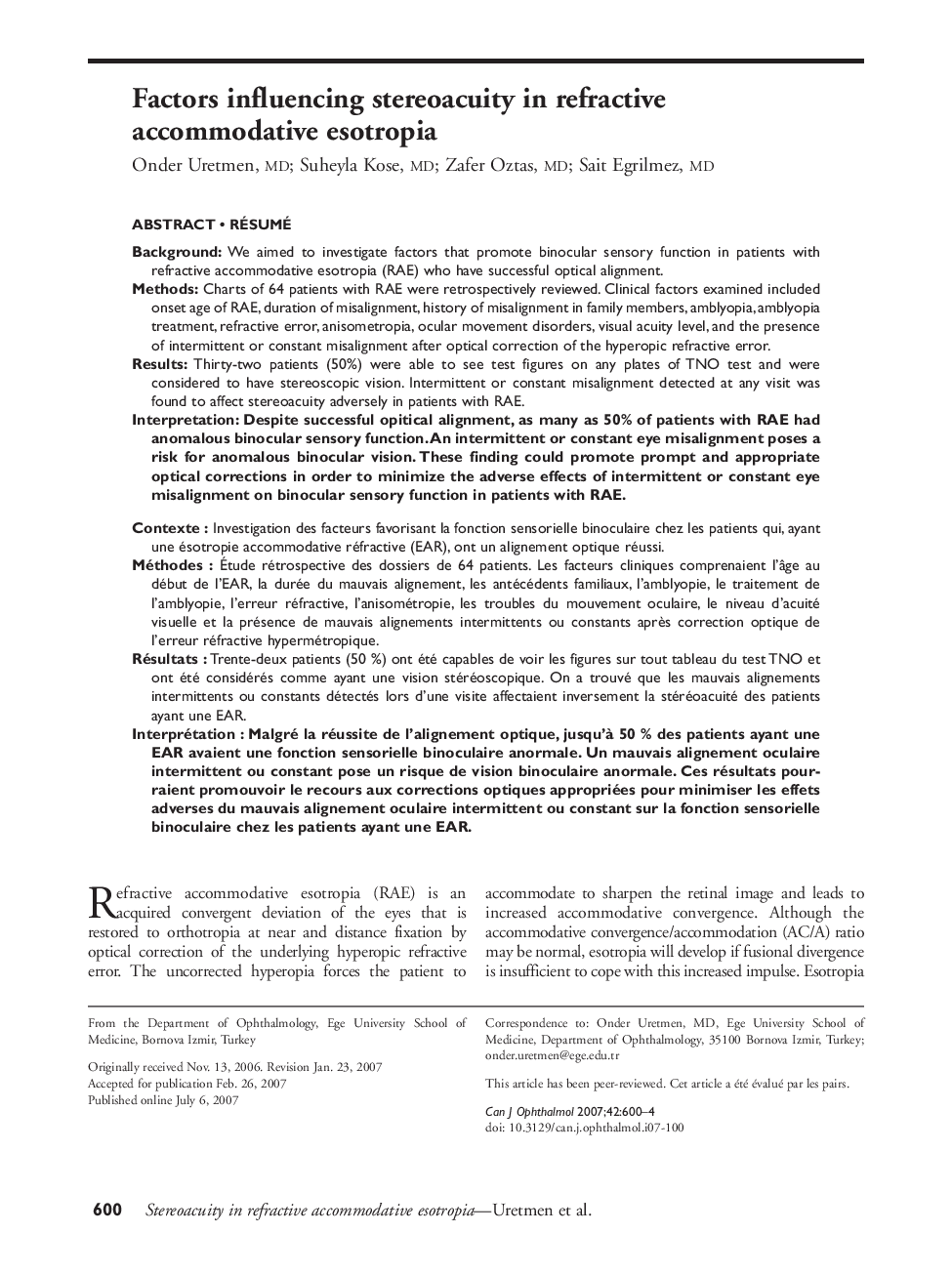| کد مقاله | کد نشریه | سال انتشار | مقاله انگلیسی | نسخه تمام متن |
|---|---|---|---|---|
| 4010936 | 1602449 | 2007 | 5 صفحه PDF | دانلود رایگان |

Background: We aimed to investigate factors that promote binocular sensory function in patients with refractive accommodative esotropia (RAE) who have successful optical alignment.Methods: Charts of 64 patients with RAE were retrospectively reviewed. Clinical factors examined included onset age of RAE, duration of misalignment, history of misalignment in family members, amblyopia, amblyopia treatment, refractive error, anisometropia, ocular movement disorders, visual acuity level, and the presence of intermittent or constant misalignment after optical correction of the hyperopic refractive error.Results: Thirty-two patients (50%) were able to see test figures on any plates of TNO test and were considered to have stereoscopic vision. Intermittent or constant misalignment detected at any visit was found to affect stereoacuity adversely in patients with RAE.Interpretation: Despite successful opitical alignment, as many as 50% of patients with RAE had anomalous binocular sensory function.An intermittent or constant eye misalignment poses a risk for anomalous binocular vision. These finding could promote prompt and appropriate optical corrections in order to minimize the adverse effects of intermittent or constant eye misalignment on binocular sensory function in patients with RAE.
RésuméContexte: Investigation des facteurs favorisant la fonction sensorielle binoculaire chez les patients qui, ayant une ésotropie accommodative réfractive (EAR), ont un alignement optique réussi.Méthodes: Étude rétrospective des dossiers de 64 patients. Les facteurs cliniques comprenaient l'âge au début de l'EAR, la durée du mauvais alignement, les antécédents familiaux, l'amblyopie, le traitement de l'amblyopie, l'erreur réfractive, l'anisométropie, les troubles du mouvement oculaire, le niveau d'acuité visuelle et la présence de mauvais alignements intermittents ou constants après correction optique de l'erreur réfractive hypermétropique.Résultats: Trente-deux patients (50 %) ont été capables de voir les figures sur tout tableau du test TNO et ont été considérés comme ayant une vision stéréoscopique. On a trouvé que les mauvais alignements intermittents ou constants détectés lors d'une visite affectaient inversement la stéréoacuité des patients ayant une EAR.Interprétation: Malgré la réussite de l'alignement optique, jusqu'à 50 % des patients ayant une EAR avaient une fonction sensorielle binoculaire anormale. Un mauvais alignement oculaire intermittent ou constant pose un risque de vision binoculaire anormale. Ces résultats pourraient promouvoir le recours aux corrections optiques appropriées pour minimiser les effets adverses du mauvais alignement oculaire intermittent ou constant sur la fonction sensorielle binoculaire chez les patients ayant une EAR.
Journal: Canadian Journal of Ophthalmology / Journal Canadien d'Ophtalmologie - Volume 42, Issue 4, August 2007, Pages 600-604